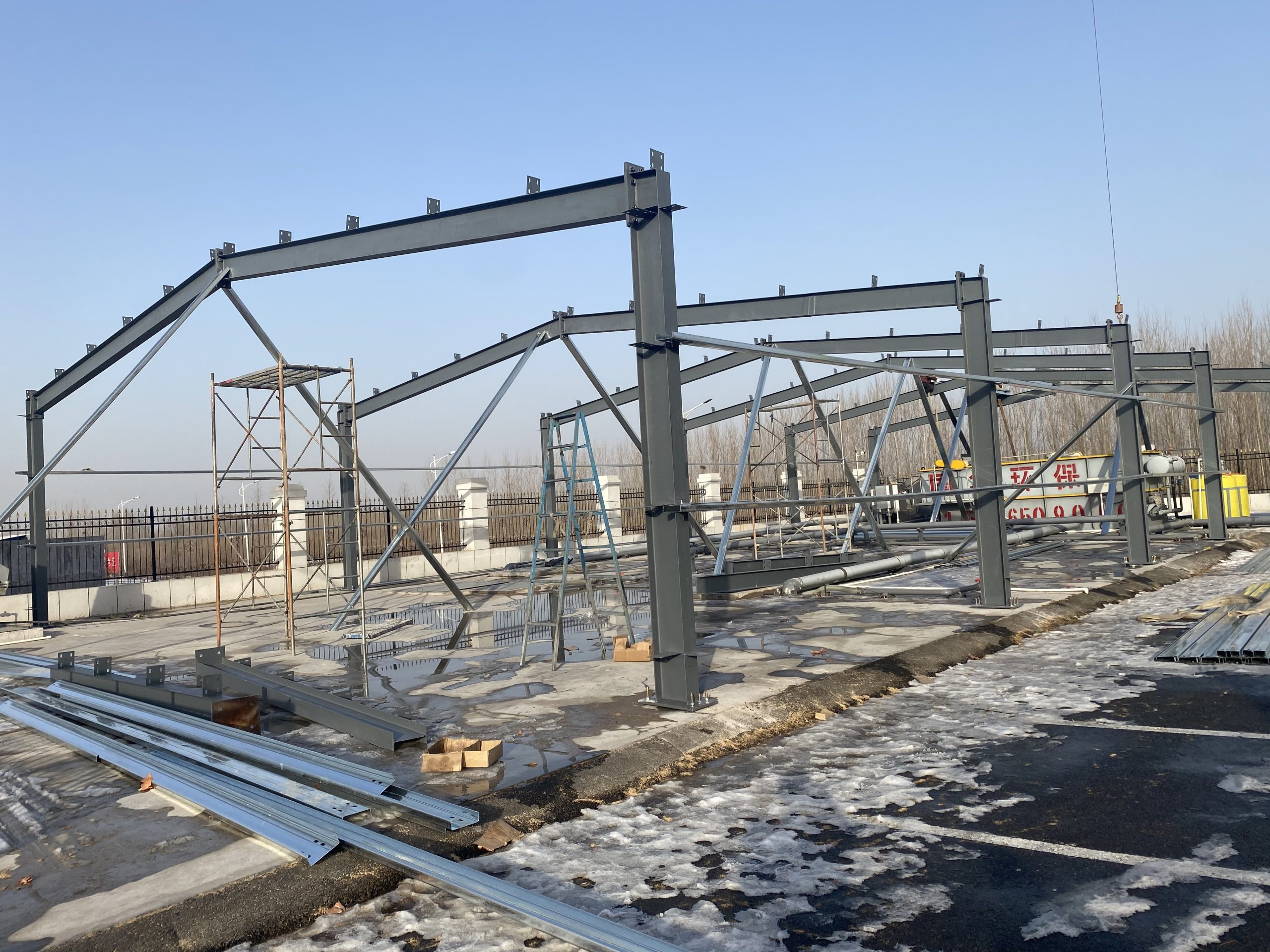Table of Contents
Benefits of Using Prefabricated Steel Structures in Large-Scale Public Facilities
Design and construction technology innovation of steel structure in large-scale public facilities has revolutionized the way buildings are constructed. Prefabricated steel structures offer numerous benefits that make them an ideal choice for large-scale public facilities such as airports, stadiums, and convention centers.
One of the key benefits of using prefabricated steel structures is their durability and strength. Steel is a highly durable material that can withstand extreme weather conditions and natural disasters. This makes it an ideal choice for buildings that need to be able to withstand the test of time and provide a safe and secure Environment for occupants.
In addition to their durability, prefabricated steel structures are also highly versatile. Steel can be easily molded and shaped to create unique and innovative designs that are not possible with other building materials. This allows architects and designers to create buildings that are not only functional but also aesthetically pleasing.

Another benefit of using prefabricated steel structures is their cost-effectiveness. Steel is a relatively inexpensive material compared to other building materials such as concrete or wood. Additionally, the prefabrication process allows for faster construction times, which can result in significant cost savings for large-scale public facilities.
Prefabricated steel structures are also environmentally friendly. Steel is a recyclable material that can be reused multiple times without losing its strength or durability. This makes it a sustainable choice for large-scale public facilities that want to reduce their carbon footprint and minimize their impact on the environment.
Furthermore, prefabricated steel structures are easy to maintain and require minimal upkeep. Steel is a low-maintenance material that does not require frequent repairs or replacements. This can result in long-term cost savings for large-scale public facilities that want to minimize their maintenance expenses.
In conclusion, the design and construction technology innovation of steel structure in large-scale public facilities offers numerous benefits that make it an ideal choice for architects, designers, and building owners. From its durability and strength to its versatility and cost-effectiveness, prefabricated steel structures are a smart choice for buildings that need to stand the test of time and provide a safe and secure environment for occupants. Additionally, the environmental benefits of using steel make it a sustainable choice for large-scale public facilities that want to reduce their carbon footprint and minimize their impact on the environment. Overall, prefabricated steel structures are a smart and practical choice for large-scale public facilities that want to combine innovation with functionality and sustainability.
Sustainable Design Strategies for Steel Structures in Public Facilities
Design and construction technology innovation of steel structure in large-scale public facilities
Steel structures have long been a popular choice for large-scale public facilities due to their strength, durability, and versatility. In recent years, there have been significant advancements in design and construction technology that have further enhanced the sustainability and efficiency of steel structures in these types of buildings.
One of the key innovations in steel structure design is the use of Building Information Modeling (BIM) Software. BIM allows architects, engineers, and contractors to create detailed 3D models of a building before construction begins. This technology enables stakeholders to visualize the project, identify potential issues, and make necessary adjustments early in the design process. By using BIM, designers can optimize the layout of steel components, reduce material waste, and improve the overall efficiency of the construction process.
Another important innovation in steel structure design is the use of advanced materials and coatings. High-strength steel alloys and corrosion-resistant coatings have significantly increased the lifespan of steel structures in public facilities. These materials are not only more durable but also more sustainable, as they require less maintenance and repair over time. By using these advanced materials, designers can create steel structures that are not only strong and resilient but also environmentally friendly.
In addition to advancements in design technology, there have also been significant innovations in construction techniques for steel structures. One such innovation is the use of prefabricated steel components. Prefabrication involves manufacturing steel components off-site and then assembling them on-site. This method reduces construction time, minimizes waste, and improves the overall quality of the finished structure. By prefabricating steel components, builders can streamline the construction process and reduce the environmental impact of large-scale public facilities.
Furthermore, the use of sustainable design strategies has become increasingly important in the construction of steel structures in public facilities. These strategies focus on reducing energy consumption, minimizing waste, and promoting environmental stewardship. One common sustainable design strategy for steel structures is the use of natural ventilation and daylighting. By incorporating these elements into the design, architects can reduce the building’s reliance on artificial lighting and HVAC Systems, resulting in lower energy costs and a smaller carbon footprint.
Another sustainable design strategy for steel structures is the use of green roofs and Solar Panels. Green roofs help to reduce stormwater runoff, improve air quality, and provide insulation for the building. Solar panels, on the other hand, generate clean, Renewable Energy that can be used to power the facility. By incorporating these sustainable features into the design of steel structures, architects can create buildings that are not only aesthetically pleasing but also environmentally responsible.
In conclusion, the design and construction technology innovation of steel structures in large-scale public facilities have come a long way in recent years. Advancements in BIM software, advanced materials, prefabrication techniques, and sustainable design strategies have all contributed to the sustainability and efficiency of steel structures in these types of buildings. By incorporating these innovations into the design and construction process, architects and builders can create steel structures that are not only strong and durable but also environmentally friendly and cost-effective.

